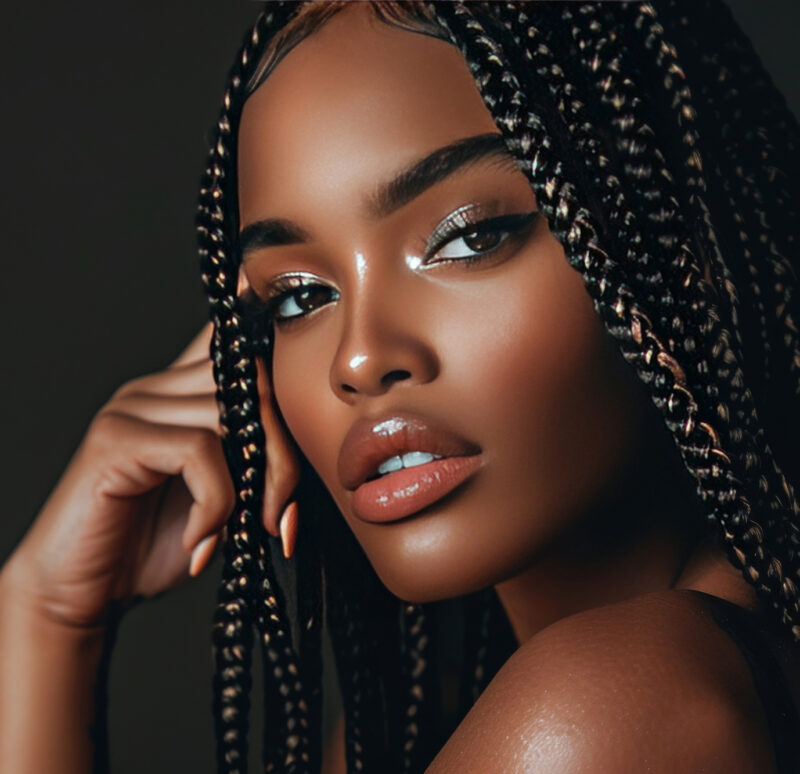Proper hair wash day routine

Having a proper hair wash day routine is essential for maintaining healthy, strong, and manageable hair. A well-structured routine not only enhances the appearance of your hair but also promotes scalp health and improves hair texture over time. Below is a comprehensive step-by-step guide that delves deeper into each stage of the hair-washing process, along with detailed tips for optimal care.
Step 1
Pre-Poo (Pre-Shampoo Treatment)
A pre-poo treatment helps shield your hair from the potentially drying effects of shampoo, facilitates detangling, and infuses moisture into your strands.
How to Pre-Poo:
- Choose a Product:
Select a pre-poo treatment that works best for your hair needs.
You can use natural oils like coconut oil, olive oil, or argan oil, which are excellent for hydration and nourishment. Alternatively, consider creating a DIY mixture with aloe vera gel combined with your chosen oils or opt for a commercially available pre-poo product designed for hair care. - Section Your Hair:
For more effective coverage, divide your hair into 4–8 manageable sections. Secure each section with clips or hair ties to keep them organized and prevent tangles during application. - Apply the Product:
Begin applying your chosen product at the ends, where hair tends to be driest and work upwards towards the roots. Be mindful to avoid excess product on the scalp unless you are using a treatment specifically meant for scalp application. - Detangle:
With the product well-distributed, gently detangle each section using your fingers or a wide-tooth comb. Start from the tips and work your way up to minimize breakage and damage. - Leave it On:
Allow the treatment to sit for about 20–30 minutes. For added moisture retention and effectiveness, consider wearing a shower cap or wrapping your hair in a warm towel to create a more humid environment.
Pro Tip:
For enhanced penetration of the oils, warm them slightly before application.
This technique is particularly beneficial for those with low-porosity hair, as it helps the product absorb more effectively.
Step 2
Shampoo Treatment
Purpose: Shampoo is essential for cleansing the scalp, eliminating product buildup, and preparing the hair for subsequent hydrating treatments.
Choosing the Right Shampoo:
- Opt for a sulfate-free shampoo to ensure gentle cleansing without stripping natural oils.
- For stubborn buildup or heavy product use, incorporate a clarifying shampoo into your routine once a month to deeply cleanse.
- If you have a sensitive or dry scalp, look for moisturizing or soothing shampoos formulated to provide relief without harsh ingredients.
How to Shampoo:
- Wet Your Hair Thoroughly:
Use lukewarm water to initially wet your hair.
This temperature helps open the hair cuticles and effectively rinses out dirt and residue. - Apply Shampoo:
Pour a small amount of shampoo into your palm and focus on your scalp.
Massage it into the scalp with your fingertips in gentle circular motions, stimulating blood flow without using your nails, which can irritate. - Spread the Lather:
Allow the lather from your scalp to run down the lengths of your hair as you rinse, cleaning them without aggressive scrubbing, which can lead to damage. - Rinse Completely:
Make sure to thoroughly rinse out all the shampoo to prevent residue buildup that could leave your hair feeling dry and straw-like.
Pro Tip:
If you’re dealing with particularly oily hair or heavy product buildup, consider double-cleansing. This means using a small amount of shampoo, rinsing, and then applying it again for a second wash. However, avoid excessive shampooing as it can strip your hair of essential oils.
Step 3
Conditioner Treatment
Conditioner plays a vital role in restoring moisture and smoothing the hair cuticle, enhancing softness and manageability.
Choosing the Right Conditioner:
- For dry or damaged hair, look for a rich hydrating or repair conditioner that targets your specific issues.
- If your hair is fine or thin, select a lightweight formula that won’t weigh your hair down.
How to Condition:
- Section Your Hair:
As with pre-poo, sectioning your hair allows for even product distribution and thorough application. - Apply to the Lengths and Ends:
Focus on applying conditioner from mid-length to ends of your hair, avoiding the scalp area to prevent unwanted greasiness. - Comb Through:
Use a wide-tooth comb to evenly distribute the conditioner through your hair, which also aids in detangling. - Let it Sit:
Allow the conditioner to work for 2–5 minutes or longer if specified on the product.
This gives your hair time to absorb nutrients effectively. - Rinse with Cool Water:
Finish by rinsing your hair with cool water, which helps to seal the cuticle, locking in moisture and enhancing shine.
Pro Tip: For extremely dry or brittle hair, consider mixing a few drops of your favorite hair oil into your conditioner for added hydration.
Step 4.
Deep Conditioning
Deep conditioning treatments provide intense hydration, repair, and nourishment to the hair, especially beneficial for those with damage or dryness.
When to Deep Condition:
- For dry, damaged, or curly hair, aim to deep condition at least once a week.
- If your hair is normal or fine, deep conditioning every 2–3 weeks should suffice to maintain optimal health.
How to Deep Condition:
- Choose the Right Product:
Select a deep conditioner or hair mask tailored to your hair’s needs—protein-rich formulas work well for damaged hair while moisturizing masks are ideal for dry hair. - Apply Generously:
Section your hair and apply the deep conditioner from roots to ends, ensuring thorough coverage, especially at the ends where damage is most prevalent. - Add Heat (Optional):
For heightened effectiveness, wear a shower cap and apply gentle heat using a heated cap, steamer, or a warm towel to help the product penetrate deeply into the hair shaft. - Let it Sit:
Allow the deep conditioner to sit for 20–30 minutes or as directed, letting the ingredients work their magic. - Rinse Thoroughly: Use cool water to rinse out the deep conditioner completely, ensuring no residue remains.
Pro Tip:
To maintain a proper balance, consider alternating between protein-rich and moisturizing deep conditioners. This practice can prevent hair from becoming too brittle or overly moist, a common issue.







